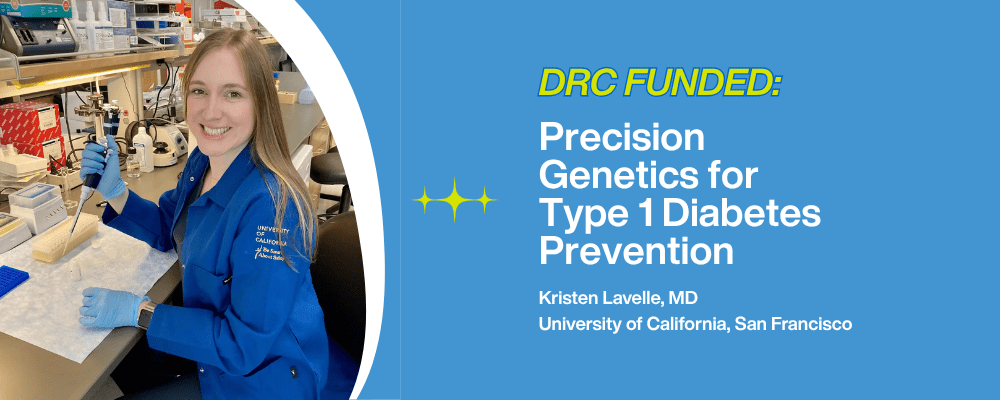Introduction to Mellitus
What’s Mellitus? Unraveling the threads of human history often reveals fascinating insights into our shared past. One such thread that has intricately woven itself into our narrative is diabetes.
This condition, which today impacts millions of lives globally, has a captivating origin and evolving story. From the first mention in ancient medical records to today, the diabetes history is both complicated and fascinating. We’ll go over type 1 diabetes history, and the history of diabetes type 2.
We are going to look a little into:
- The history of diabetes mellitus, and why it was called that
- How diabetes was treated in the 1900s
- How diabetes was discovered in the 1600
- How diabetes was diagnosed in the 1600
- Alongside a lot of other interesting information
Most believe that diabetes was discovered in the 1600s, but we’ll look at how it may have been as early as the 2nd century.
On the diabetes history timeline the first recorded account goes back thousands of years into ancient history. Much like a cryptic riddle, diabetes presented itself as a puzzling condition to early healers. The beginnings of diabetes, or what we know today as diabetes mellitus, originated from early observations. Doctors noticed patients were urinating excessively and their urine had an unusual sweet taste.
The advent of the 17th century saw the scientific curiosity of the age tackling the mystery of diabetes. How was diabetes diagnosed in the 1600s? Would you be surprised to discover that it was the same way it had been diagnosed for thousands of years. Doctors would taste a patient’s urine to check if it was sweet, a key indicator of the disease.
But when was diabetes discovered exactly? And who were the pioneering minds behind these discoveries? We will guide you through type 1 and type 2 diabetes history. We’ll discuss the groundbreaking treatment methods, the first diabetes patient, and the incredible medical advances that have transformed diabetes management.
So join us as we trace the timeline of diabetes from its earliest known references to its modern understanding. We’ll explore the challenges, breakthroughs, and the relentless human spirit that has shaped the story of diabetes.
Diabetes in Ancient History: The Sweet Mystery
Diabetes, as we know it today, was a medical enigma to the physicians of ancient civilizations. Its mysterious nature and unique symptoms made it a distinctive condition, although its true cause remained unknown for centuries.
We don’t know when diabetes was first discovered but it was mentioned in Egyptian medical papyri dating back to 1500 BCE. These ancient documents describe a malady characterized by frequent urination, a symptom that is now associated with diabetes mellitus.
However, the term “diabetes” itself did not exist until around 250 BCE, when a Greek physician, Apollonius of Memphis, coined it. Derived from the Greek word “diabainein,” meaning “to pass through,” it referred to the excessive urination that marked the condition.
The term “mellitus”, which means “sweet like honey”, was added to diabetes because of the sweet taste of a patient’s urine. Ancient Greek doctors thought the urine of these patients tasted sweet. Doctor Thomas Willis named the disease “mellitus” in the 1600s.
He added this because there was another condition called “diabetes insipidus” that caused frequent urination without sweet urine. Even during Willis’ time, diagnosing diabetes still involved physicians tasting a patient’s urine to detect the presence of sugar.
Long story short, how was diabetes diagnosed in the 1600s? Pee being sweet… The history of type 1 diabetes is not very pleasant. We can only guess how they tested for diabetes in the old days.
These early references in diabetes mellitus origins underscore the evolving understanding of this complex condition in ancient times. While the methods might seem basic now, these observations laid the groundwork for future exploration and understanding of diabetes.
Evolution of Diabetes Understanding and Treatment: From Discovery to Innovations
How did diabetes start? In honesty we don’t know, we also don’t know for sure who discovered diabetes. In as early as the 2th century, Aretaeus of Cappadocia made a clear and accurate description.
The 19th century marked a new era in our understanding of diabetes. How was diabetes treated in the 1800s? Initially the same way since it was first discovered, through a low carbohydrate diet.
Then in 1889 the role of the pancreas in diabetes was established by German physicians Joseph von Mering and Oskar Minkowski. Their experiments involved removing the pancreas from a healthy dog, leading to the animal developing diabetes-like symptoms. This discovery underlined the pancreas’s role in blood sugar regulation.
However, the real breakthrough came in the 1920s with the discovery of insulin. Canadian doctor Banting and his assistant Best did experiments that changed diabetes treatment forever. They successfully extracted insulin, a hormone produced by the islets of Langerhans in the pancreas. This hormone is important for controlling blood sugar levels and changed how diabetes was diagnosed in the 1920s.
Their groundbreaking work led to the first successful insulin treatment of a diabetes patient in 1922. Leonard Thompson, a 14-year-old boy, became the first patient to receive an insulin injection, significantly improving his health. Banting and Macleod won the Nobel Prize in Medicine in 1923 for their important discovery.
As the 20th century progressed, further advances were made in diabetes diagnosis and treatment. By the 1960s, self-monitoring of blood glucose levels had become a reality. The development of glucose monitors and insulin pumps offered people with diabetes more control over their health. These contributed heavily to how diabetes was diagnosed in the 1960s.
The 1980s brought another milestone with the introduction of human insulin. Before this, insulin was primarily extracted from pigs and cattle. Human insulin made with DNA technology has helped people with diabetes by improving treatment and reducing side effects.
Humans are determined to learn and find solutions. This is evident in the study of diabetes and its treatment. The study has progressed from finding sugar in urine to using insulin. The history of diabetes timeline has important milestones that help us understand and manage this complex condition.
The Modern History of Diabetes: A New Era of Treatment and Technology
With the discovery of human insulin, the world of diabetes treatment entered a new era. As the 20th century progressed, technology became an increasingly important ally in the fight against diabetes.
Insulin pumps in the 1970s delivered insulin under the skin, acting like a healthy pancreas. This not only improved blood glucose control but also provided people living with diabetes greater flexibility and quality of life.
The 1980s brought blood glucose meters. Devices for monitoring blood sugar levels at home are essential for managing diabetes effectively. In the 90s, these devices were common. By the 2000s, they became smaller, faster, and more precise.
The next major breakthrough in diabetes management came in the form of Continuous Glucose Monitoring (CGM) systems in the early 2000s. These devices monitor blood sugar levels continuously, both during the day and at night. They have significantly enhanced the management of both type 1 and type 2 diabetes.
The Distinct Paths of Type 1 and Type 2 Diabetes
Even though Type 1 and Type 2 diabetes share a common name, their causes, development, and treatment approaches significantly differ. These two types of diabetes have distinct histories and pathways, contributing uniquely to our overall understanding of diabetes as a condition.
The History of Type 2 Diabetes – Type 2 diabetes is largely a disease of lifestyle and usually develops later in life. Type 2 diabetes was first described in the 1930s, although its history is not as well-documented as Type 1 diabetes. It was recognized as a distinct condition, different from Type 1 diabetes, that generally affected adults and wasn’t dependent on insulin. The disease likely existed long before but was not distinguished from other forms of diabetes.
In the past, Type 2 diabetes was treated with diet and exercise. But now, the way it is managed has improved. In the 1950s, drugs like metformin were introduced to help fight Type 2 diabetes by lowering blood sugar levels.
Type 1 and Type 2 Diabetes both cause high blood sugar, but their causes are different. Type 1 is a condition that starts in childhood. It happens when the body’s immune system attacks and destroys cells in the pancreas that make insulin.
On the other hand, Type 2 diabetes typically develops in adults and is often linked to obesity and a sedentary lifestyle. The body may not use insulin properly or produce enough. In order to control it, lifestyle changes, pills, or insulin injections may be necessary.
Both types have different histories, understanding, and treatment. They are distinct conditions and need separate approaches in management and research.
The story of diabetes is a testament to human resilience and the power of scientific discovery. Its mysterious origins in ancient history to the revolutionary discovery of insulin by Frederick Banting and Charles Herbert Best. Insulin pumps, glucose monitoring, and diabetes management have improved a lot with groundbreaking technologies and our knowledge. Yet, the journey is far from over, as researchers worldwide continue to seek even better treatments and, ultimately, a cure for mellitus.
Conclusion: The Journey Continues
Diabetes history has seen many discoveries, from ancient times to modern glucose monitors and insulin pumps. The narrative of diabetes is an inspiring testament to human resilience and innovation.
The work of Apollonius of Memphis, Frederick Grant Banting, and Charles Herbert Best has changed our understanding of diabetes. Their research paved the way for the advances of diabetic management for those living with the condition. Moreover, the story of the first diabetes patient, Leonard Thompson, demonstrates the tangible impact of scientific discovery on human lives.
However, the story of diabetes is far from finished. Despite the progress we’ve made, the global prevalence of diabetes continues to rise, underscoring the need for ongoing research and innovation. At the Diabetes Research Connection, we support cutting-edge research and raise funding for the next generation of discoveries in the treatment of Type 1 Diabetes, driving hope for better management and potential cures.
We invite you to be part of our ongoing journey as we try to expand our understanding of diabetes. Ultimately paving the way for effective therapies and even a cure. The history of diabetes is still being written, and together, we can play a crucial role in shaping its future.
Honorable Mention
Banting and Macleod were awarded a nobel prize for their discovery of insulin. This makes them one of the first persons to receive a noble prize for diabetes-related science.




